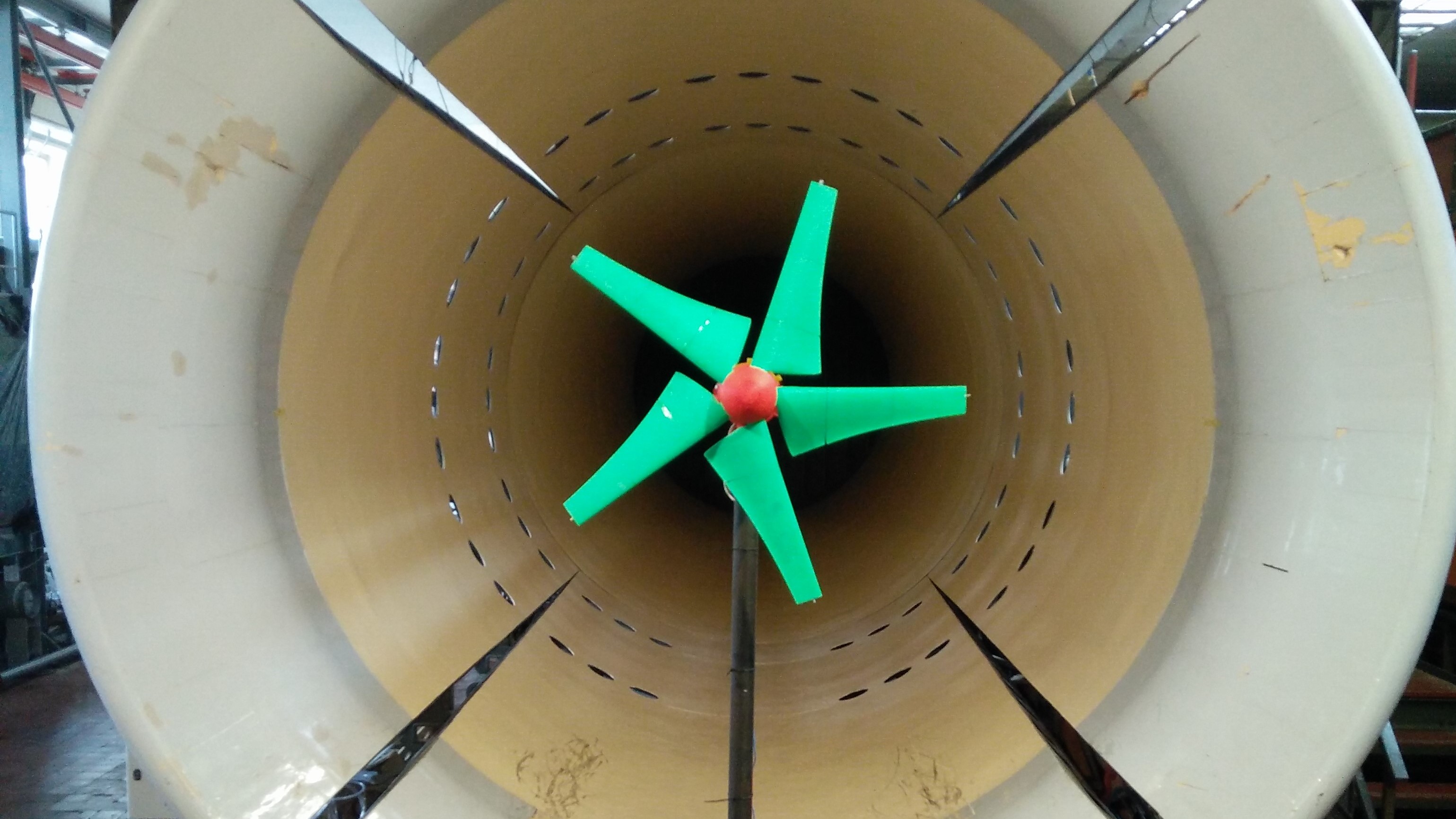Master’s thesis: 3D-printed horizontal-axis wind turbine

Rapid prototyping (also known as 3D printing) is becoming more and more available to everyone through the apparition of fab labs and hackerspaces in universities and big cities. Its main advantages are the speed of fabrication and the ease to share designs with other people. People have great expectations of 3D printing in particular. The main goal of this master’s thesis was to prove that rapid prototyping can be used to build a whole working prototype such as a small wind turbine and to take advantage of this technology by designing parts differently.
A 70cm rotor was successfully built with Fused Deposition Modeling, one type of 3D printing, and assembled. This prototype was tested experimentally in a large wind turbine and generated up to 100W of power through a BLDC motor re-used as a generator. An ad-hoc experimental test bench was developed and equiped with a variable load (through a Boost converter) to control the rotational speed of the wind turbine and study its aerodynamics. It was shown that the proposed design reached a power coefficient of 0,4 and was stable up to 900 rpm, exceeding the state-of-the-art. Finally, tools were developed to design a PMSG generator to be 3D printed, to replace the unadapted Maxon BLDC motor in a future study.
